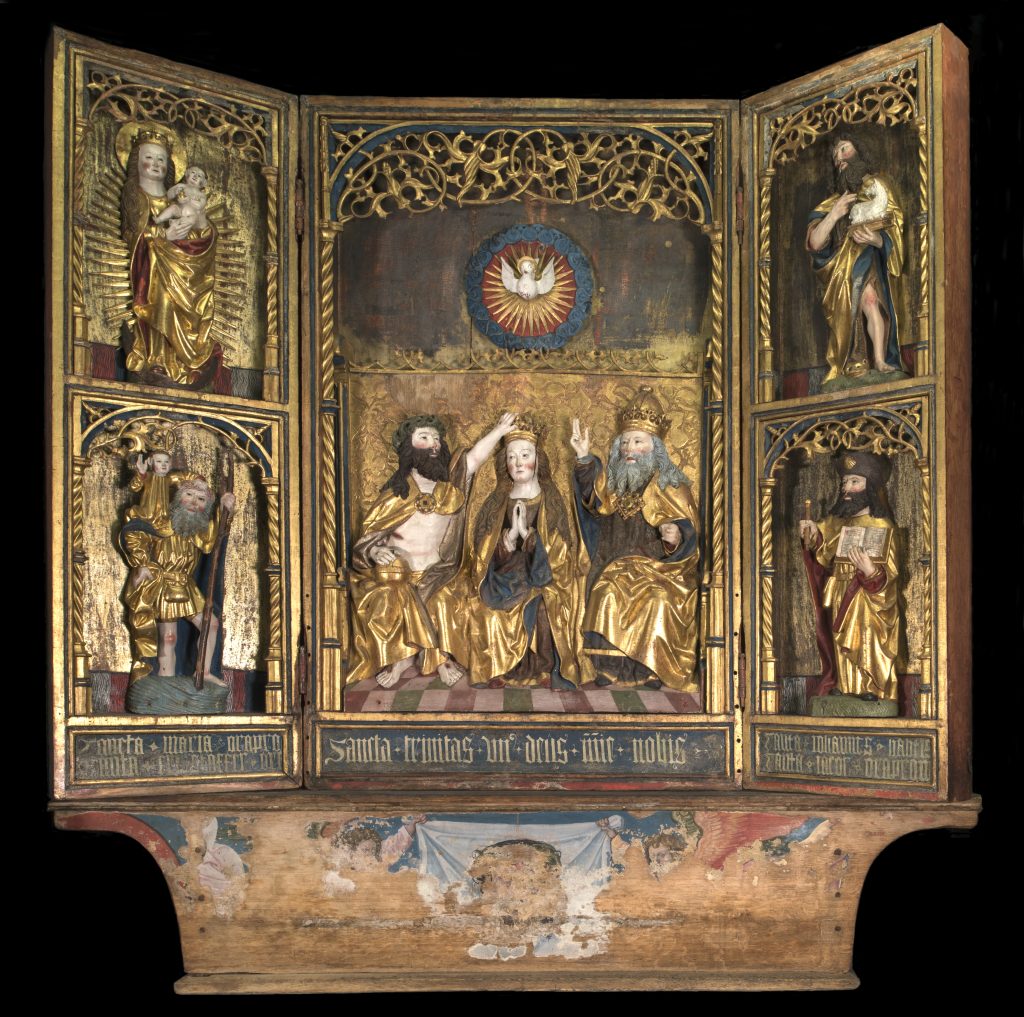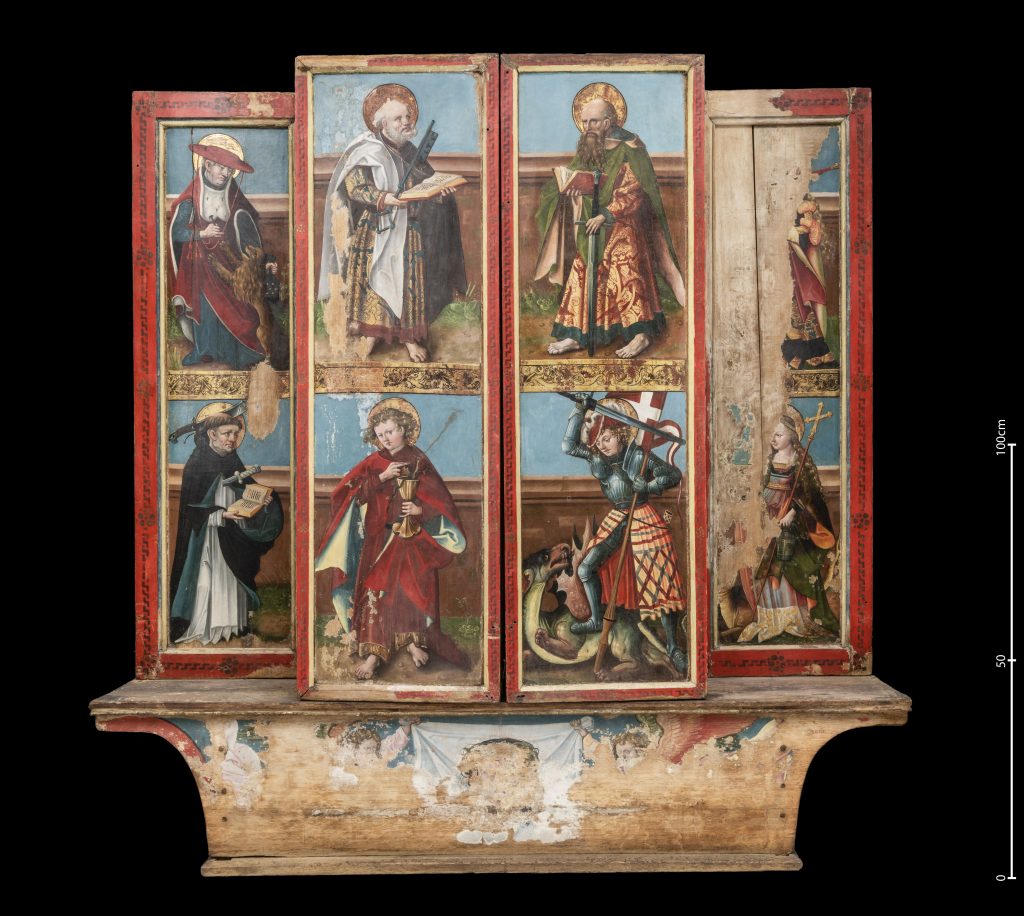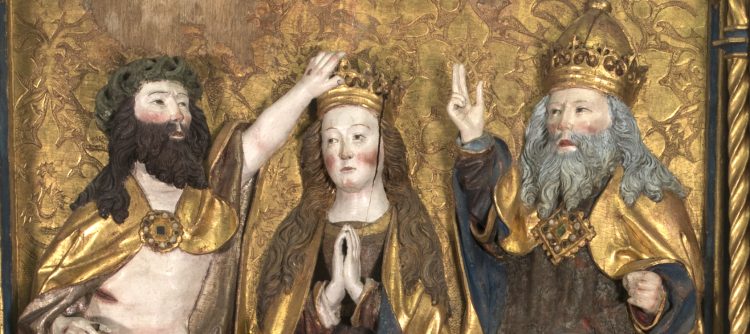Together with the winged altarpiece from Austevoll (MA 283), this example from Uggdal (formerly Opdal) on the island of Tysnes is preserved in its entirety. The central chest shows a relief group representing the Coronation of the Virgin Mary by Christ (left) and God the Father (right), with the Holy Spirit appearing in the shape of a dove above. At the top is a tracery baldachin and at the bottom an inscription reading Sancta trinitas un[us] deus mi[serer]e nobis (‘Holy Trinity, have mercy on us’).

The wings have a relief on the right with the Madonna in a wreath of rays and St. Christopher on the left and John the Baptist and James the Elder on the right. The back wall in the center field and the wings are covered with imitation gold.

When the inner wings are closed, eight painted saints’ portraits become visible, all standing on a green floor before a brick wall under a blue sky. These are distributed over the exteriors of the inner wings and the fixed rear ‘Standflügel’, from left to right: St Jerome, St Peter, St Paul and St Catherine (?) (top) and St Peter Martyr, St John the Evangelist, St George and St Margaret (bottom). The painted predella features the Veil of Veronica held up by two angels.
The altarpiece was produced in Northern Germany, perhaps in Hamburg or Lüneburg. A fascinating aspect is its survival of the Protestant Reformation in 1536-1537. The central representation is non-Biblical and therefore did not meet the Lutheran criteria. Another remarkable aspect is the wealth of saints, whose veneration was pushed back by the Lutherans. The altarpiece features several explicitly Catholic images, including the haloed Virgin and Child, the legendary giant St Christopher and St James dressed in pilgrim’s attire. Morevover, all figures are accompanied by inscriptions calling on them for intercession: ora pro [nobis]. The veneration of the face of the suffering Christ in the shape of the Veil of Veronica was also inextricably connected to pre-Reformation devotional practice. All of this makes the Uggdal altarpiece an eloquent illustration of the Lutherans’ tolerant stance towards the material heritage of the Catholic Middle Ages, which has been termed the ‘preserving power of Lutheranism’.
Northern Germany, c. 1520
From Uggdal, Tysnes (Sunnhordland), in the museum since 1876
Oak, polychromy, painting
H 192 x W 198 x D 35 cm (opened)
W 198 cm x D 46 cm (closed)
Inv. no. MA 193
